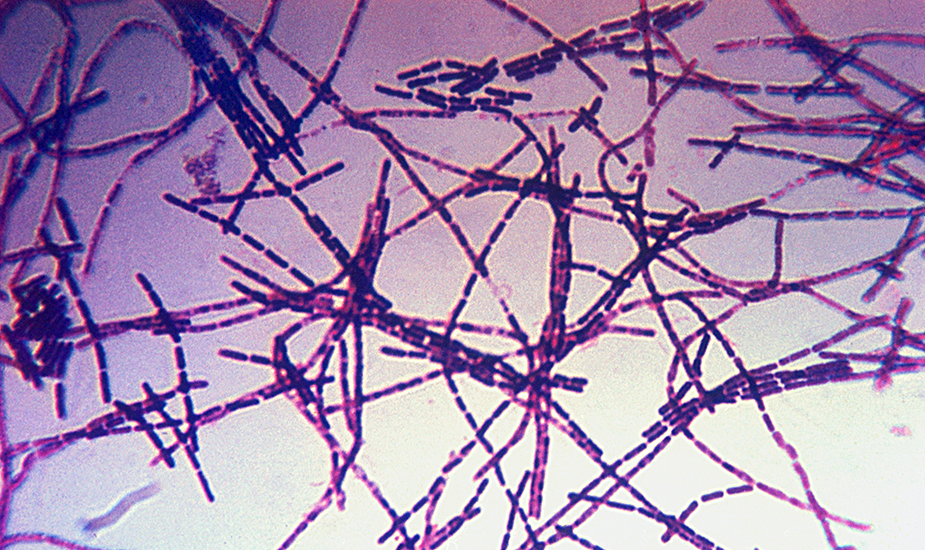
A photomicrograph of Bacillus anthracis bacteria using Gram-stain technique. Anthrax is diagnosed by isolating B. anthracis from the blood, skin lesions, or respiratory secretions, or by measuring specific antibodies in the blood of persons with suspected cases
Begun in 2000 and ended in 2010, the Foundation’s Biosecurity program is credited with laying the foundation for and establishing a sustainable approach to the nascent field of biosecurity.
History
The Alfred P. Sloan Foundation’s Biosecurity program is credited with laying the foundation for and establishing a sustainable approach to the nascent field of biosecurity. Established in 2000–before 9/11 and the 2001 anthrax attacks made the threat of bioterrorism a reality to the nation–the program invested $44.1 million over the course of a decade to address national security and the threat of biological weapons. Grant-making in the Biosecurity program concluded in 2010.
The program’s early focus was on preparedness, both for individuals and organizations. Among the important projects funded during this time was the development of the U.S. Department of Homeland Security’s Ready.gov public awareness campaign, which remains the nation’s leading resource for emergency preparedness guidelines. The program also funded the long-standing Ready New York campaign.
Given the global threat posed by bioterrorism, the Foundation funded the only truly international bioterrorism prevention effort: Interpol's successful awareness and training program for law-enforcement worldwide.
The Foundation also underwrote the influential Center for Biosecurity at the University of Pittsburgh Medical Center (now renamed the UPMC Center for Health Security). The Center was established to strengthen national security by reducing the risks posed by biological attacks, epidemics, and other destabilizing events, and to improve the nation’s resilience in the face of such events.
In addition to preparedness concerns, the Biosecurity program also focused on addressing issues surrounding the responsible stewardship of powerful biotechnologies and the potential misuse of scientific knowledge, methods, and materials in the life sciences. Among the important projects funded was the landmark Fink Committee report, “Biotechnology Research in an Age of Terrorism,” the U.S. National Academies’ International Biosecurity Project, and the World Health Organization’s program to raise global awareness, which culminated in its “Responsible Life Sciences Research for Global Health Security: A Guidance Document.”
At the time of the program’s inception, the U.S. government was not organized to address biosecurity. The Sloan Foundation’s program was successful in bringing attention to the many issues and challenges posed by biological threats to the extent that U.S. government funding for biodefense increased by more than two-thousand percent from 2000 to 2010.
Today, leaders in the biosecurity field credit the Sloan Foundation with providing the leadership and financial support that laid the groundwork for a nation that is now better prepared for biological threats to national security and public health.
The Sloan Biosecurity program is the subject of a book by Gigi Kwik Gronvall, Preparing for Bioterrorism—The Alfred P. Sloan Foundation’s Leadership in Biosecurity.
Resources
-
Center for Health Security
Visit Site -
Charting the Future of Biosecurity: Ten Years After the Anthrax Attacks
Visit Site -
What is your Readiness Quotient?
Visit Site -
Ready.gov
Visit Site -
Biotechnology Research in an Age of Terrorism (The Fink Report)
Visit Site -
International Society for Disease Surveillance
Advancing the science and practice of global health surveillance
Visit Site -
Preparing for Bioterrorism: The Alfred P. Sloan Foundation's Leadership in Biosecurity
Author Gigi Kwik Gronvall looks at the impact of Sloan's Biosecurity program...and what's left to be done.
Visit Site